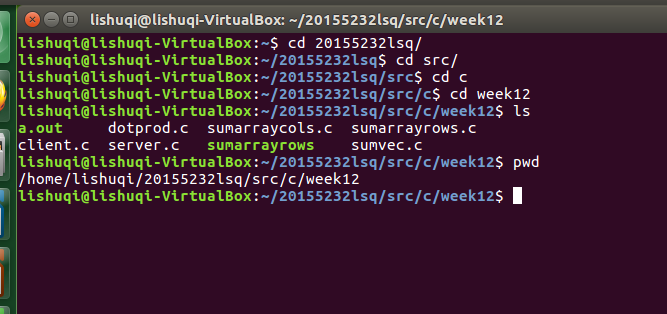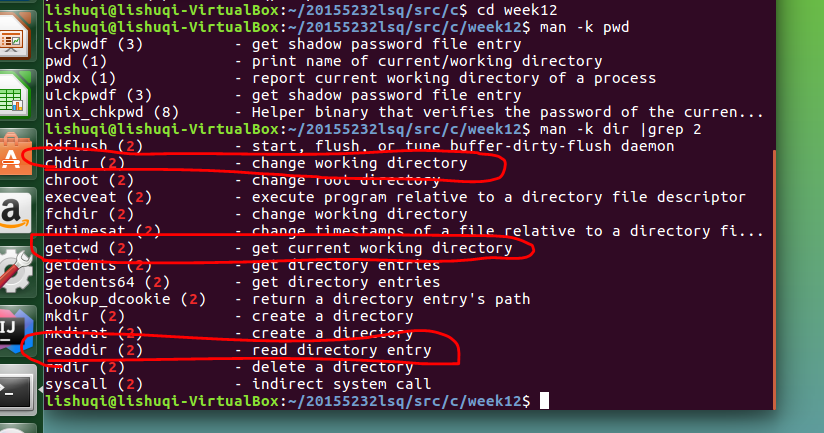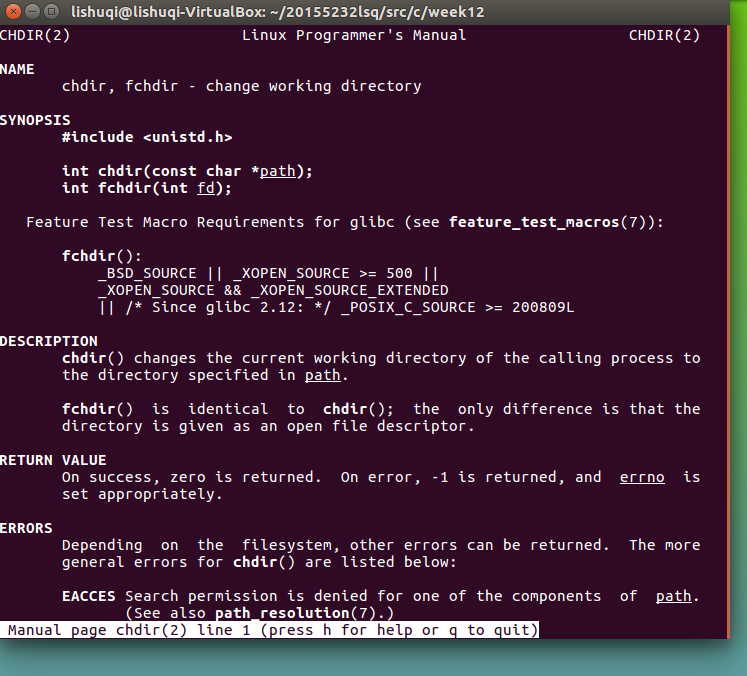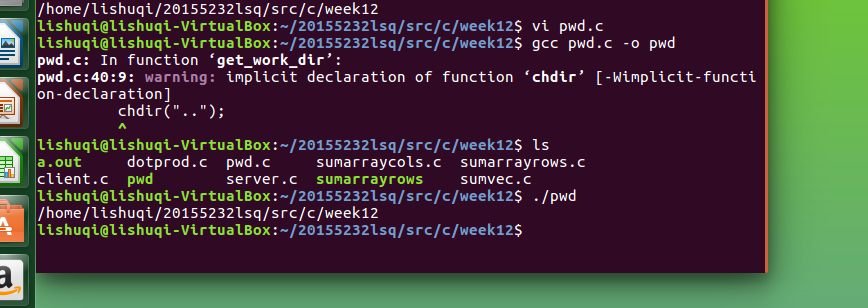linux pwd指令C實現
阿新 • • 發佈:2017-11-19
types ima 指針 exit sed char 詳細信息 命令行 dir
linux pwd指令C實現
整體思路
- 實現pwd命令:
在命令行輸入pwd:顯示了現在所在路徑。

研究實現pwd所需的系統調用
我們可以通過man命令和grep命令來獲取我們所需要的系統調用函數信息

man chdir

目錄是一種文件,這種文件比較特殊,它裏面存儲的是一張對應表,即文件名和i節點的對應關系表,而i節點才是記錄此文件詳細信息的結構,如文件大小,屬性,權限,存在硬盤的那個塊等。在一個目錄創建文件就是在這張表裏添加對應關系,使用某個文件時也是根據i節點確定在硬盤的實際存儲位置的。
可以通過
readdir(".")來獲取當前的目錄。
cd ..
cd
命令返回父級目錄,然後在
readdir(".");來讀取當前目錄,依次執行下去。
所以通過實現
cd命令,即可解決
pwd命令
通過
man -k chage | grep dir==可用chdir實現==
在根目錄下運行查看
"."
".."的i結點節點號一樣的。==即可作為循環的終止條件==。
來查看i結點值。ls -i -a .
概括來講,就是:
1.找到本目錄的i-節點
2.進入父目錄,找到i-節點對應的文件名
3.循環以上過程,直到到達根目
偽代碼
定義一個char數組用來保存當前目錄的絕對路徑; 遞歸: 調用函數chdir()來改變當前程序的工作路徑;(返回上一級) if(返回的指針==NULL) 調用函數中存在錯誤,輸出錯誤警告; else 直接打印結果
代碼實現

詳細代碼:
#include <stdio.h> #include <sys/types.h> #include <sys/stat.h> #include <dirent.h> ino_t get_inode(char*); void printpathto(ino_t); void inum_to_name(ino_t,char*,int); int main() { printpathto(get_inode(".")); //print path to here putchar(‘\n‘); return 0; } void printpathto(ino_t this_inode) { ino_t my_inode; char its_name[BUFSIZ]; /*如果本目錄的i-節點與上級目錄不同,即本目錄不是根目錄*/ if (get_inode("..")!=this_inode) { chdir(".."); //進入上級目錄 inum_to_name(this_inode,its_name,BUFSIZ); my_inode = get_inode("."); printpathto(my_inode); printf("/%s",its_name); } } void inum_to_name(ino_t inode_to_find,char* namebuf,int buflen) //找到i-節點對應的文件名,並放在字符數組裏 { DIR* dir_ptr; struct dirent* direntp; dir_ptr = opendir("."); if (dir_ptr == NULL) { perror("."); exit(1); } while((direntp = readdir(dir_ptr)) != NULL) { if(direntp->d_ino == inode_to_find) { strncpy(namebuf,direntp->d_name,buflen); namebuf[buflen-1] = ‘\0‘; closedir( dir_ptr); return; } } fprintf( stderr , "error looking for inum % d\n" ,inode_to_find); exit (1) ; } ino_t get_inode(char* fname) //根據文件名,返回-i節點 { struct stat info; if ( stat( fname, &info) == -1){ fprintf( stderr , "Cannot stat "); perror(fname); exit (1); } return info.st_ino; }
linux pwd指令C實現
